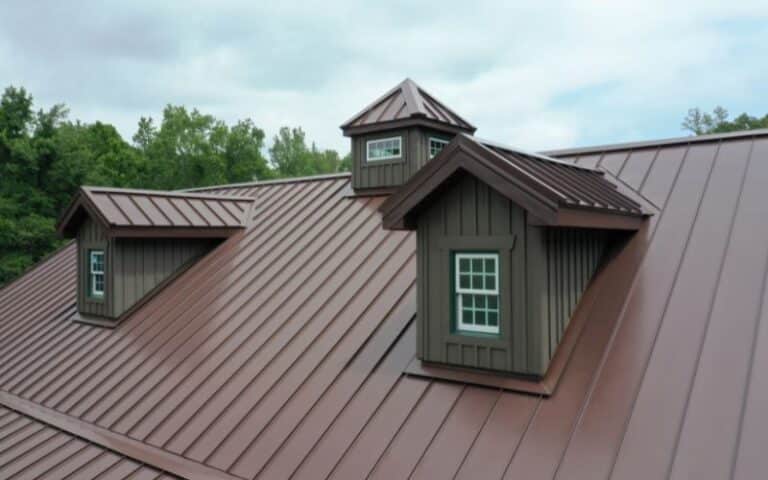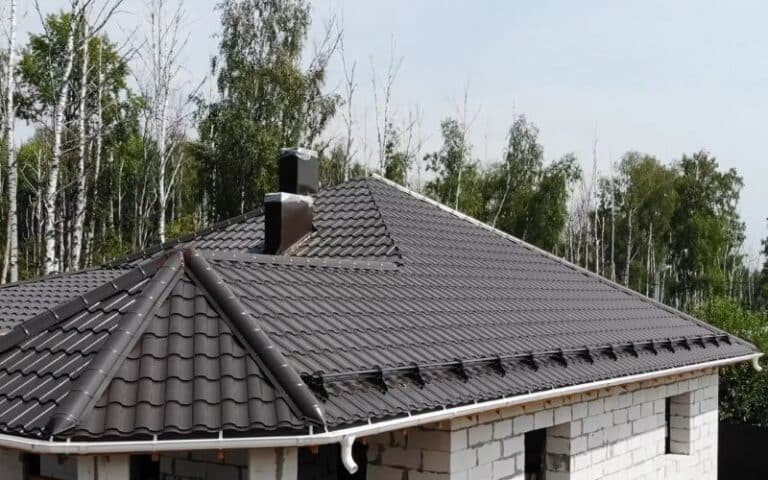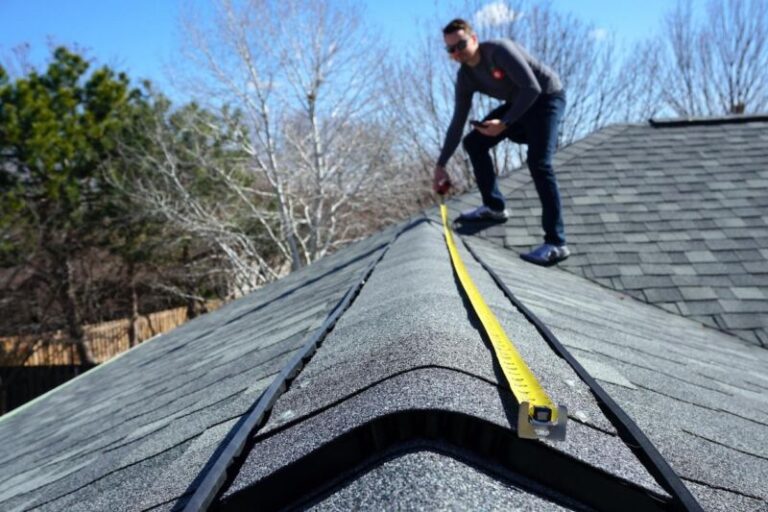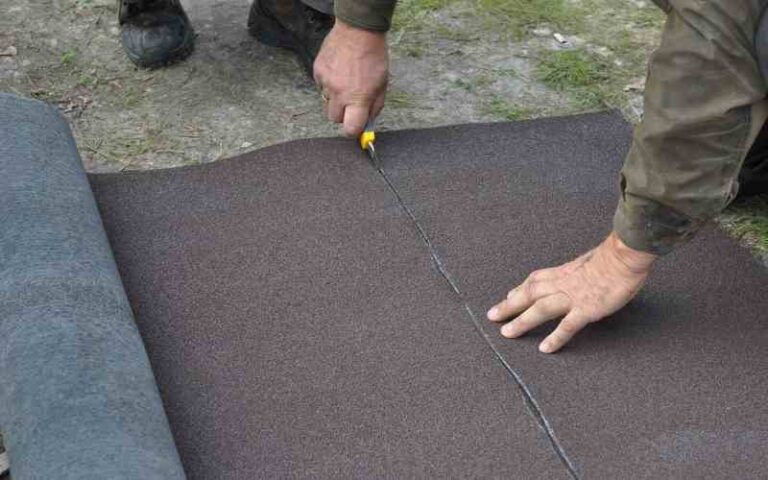You will have a service mast if you get your power supply from an overhead distribution system. Most homes have a pack of wires that comes from a nearby electric pole to the house.
The wiring between the service entrance and the overhead service drop is within the service mast. If the mast is not functioning well, you will likely have power.
The minimum height of a service mast above the roof should be 30 inches. The recommended distance is from the bottom of the weatherboard to the top. Service masts more than 36 inches above the room need a solid bracing system. Also, the point of attachment of the service mast should not be more than 7 meters.
Ready for a Roofing Quiz?
Service Mast Height Above the Roof
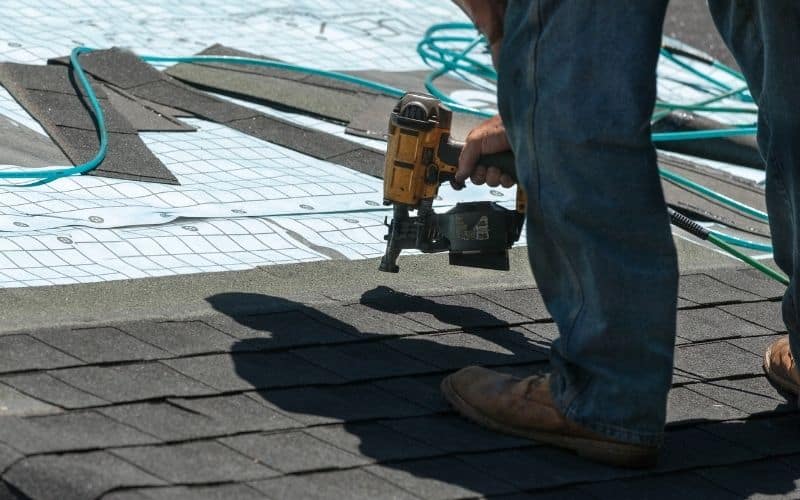
The service mast should have a minimum clearance of 8 feet from the highest point of the roof.
However, this rule has exceptions which are:
- If the voltage in the mast does not pass 300 volts and the roof has a minimum slope of 4 inches in 12 inches, the clearance should be more than 3 feet.
- If the voltage between the service drop conductors is 300 volts where 4 feet of the service drop conductors pass above the roof, a clearance of 18 inches should be from any portion of the roof.
During the roof installation, proximity to the mast can cause damage to the wires and the roof itself.
In addition, equipment like nails used during roof installation and repair can hit and perforate the mast.
The perforation can result in electric shocks and even fire incidents, which may claim lives and properties.
Electrical Service Mast Height Above the Roof
The distance of an electrical service mast height should not be less than 30 inches. The length is from the end of the weatherboard to the roof.
The weatherboard is a fiber cement cladding with some qualities such as resistance to fire and rot.
Service conductors are to prevent injury as a result of fire incidence. Weather and other factors can damage the mast over time despite properly installing the service conductors.
Below are some of the common problems that can affect the service mast:
#1. Disconnected Wires
Disconnected wires are a result of something heavy falling on the wires. It mostly happens during the rainy seasons. The impact of the weight causes the wire to disconnect from the house.
The effect is not limited to just a wire; it can affect several wires. Therefore, it must be that wires should be appropriately attached to the wall to avoid frequent disconnection.
In addition, dangling wires are dangerous and can result in fire incidence.
#2. Proximity to the Windows
The guidelines given by the regulated authorities say a service mast should not be close to the house’s window. The maximum distance it should have away from the house’s window is 3 feet.
The voltage that the mast houses come directly from the power distribution line, which poses a significant risk to the people living in the environment.
#3. Too Low Electric Wires
The regulating authority has stated that the electric wires should not be too low. The cables should not be lower than 10 feet when measured from the ground.
However, some house owners break this rule when expanding their houses.
#4. Smoking Electric Wire
Damaged electric wire can produce up to 240 volts of unfused electricity to the environment. Exposed wires can also cause this condition.
The high voltage of electricity released poses a significant risk to the environment and people.
For example, the high voltage can cause a spark that could start a fire and cause injury and loss of lives and property.
#5. Disconnected Meter Socket
The electrical meter links up the connection between the wires in the service mast and the home appliances. The cables are all connected to the electric meter through the meter socket.
The meter socket is located on top of the meter and is well-protected. If the protection is no longer in place, the meter socket is vulnerable to all kinds of attacks from weather and damage.
Damage to the socket automatically leads to disconnection. However, it is essential to note that the reconnection should not be done by an unprofessional.
#6. Improper Fixtures
Some homes with coated wall surfaces or other architectural decorations are to fix the electrical wires inside the wall.
However, it is hazardous and poses a significant risk to the environment and the people in the house. Therefore, the guidelines state that the electric cables must always be outside the house.
The improper fixture is caused mainly by home expansion.
Most service mast problems are to be fixed by a professional. The electrical wire carries high voltage that an unprofessional does not know how to handle.
Mishandling of the service mast can lead to loss of lives and properties. There should be an immediate solution when it appears damaged to avoid further degeneration.
Although you can rectify it by replacing the damaged parts, a professional must fix them.
The only responsibility of the utility company is to connect your house and the power pole with a power cable.
They are also the only people allowed to attach electric utility conductors to the service mast.
What is the Minimum Clearance for a Service of 240 Volts Above the Roof?
The electric service in homes enters in two forms: 120volts and 240 volts. The actual voltage varies between these two forms, called nominal numbers.
Therefore, for all installation works exceeding 100amps, a master electrician is needed.
In addition, house owners should know the electrical load their house carries. It will enable them to be more familiar with the electrical system in the place.
The total electric load depends on all the power supply appliances. It includes the refrigerator, washing machines, etc. Knowing these basics will enable you to efficiently and safely use your power supply.
How High Can a Service Mast Be Above a Roof?
The maximum height of the service mast above the roof mustn’t be less than 8 feet. However, bracing is needed if any mast is more than 8 feet, which will serve as additional support.
Service masts more than 30 meters in height can only be installed with a clearance certificate by the concerned authority.
Some specifications have been for a service mast on a roof. The telecommunication services providers and operators must strictly adhere to these rules.
Non-compliance is a punishable offense. The rules are in place because of public safety and the safety of personnel and equipment.
Generally, there should be a minimum vertical clearance of about 8 feet above the roof’s surface. In all directions from the ends of the roof, the minimum distance should be 3 feet.
Conclusion
The service mast bridges the gap between your house and the power distribution system. It coordinates all the voltage that enters the house; thus, you must keep it appropriately.
Homeowners should know the minimum and the maximum height required for the service mast to be above the roof.
It will ensure that the house is safe and free from any electrical injury which might result from improper installation of the overhead service conductors.

